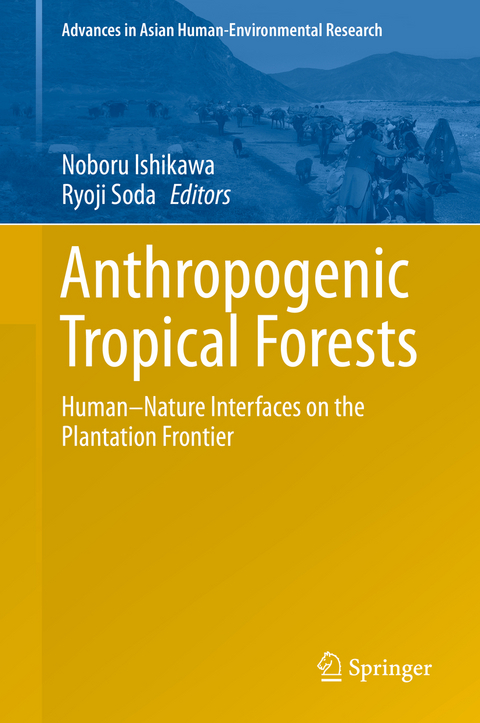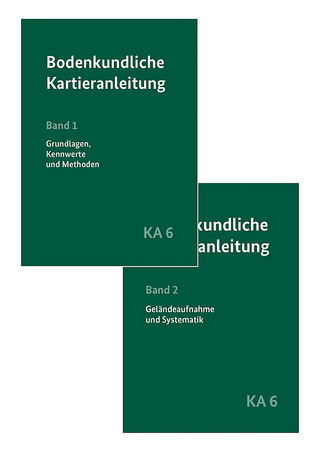
Anthropogenic Tropical Forests
Springer Verlag, Singapore
978-981-13-7511-8 (ISBN)
The project involved the collaboration of researchers specialising in anthropology, geography, Southeast Asian history, global history, area studies, political ecology, environmental economics, plant ecology, animal ecology, forest ecology, hydrology, ichthyology, geomorphology and life-cycle assessment.
Collectively, the transdisciplinary research addresses a number of vital questions. How are material cycles and food webs altered as a result of large-scale land-use change? How have new commodity chains emerged while older ones have disappeared? What changes are associated with such shifts? What are the relationships among these three elements—commodity chains, material cycles and food webs? Attempts to answer these questions led the team to go beyond the dichotomy of society and nature as well as human and non-human. Rather, the research highlights complex relational entanglements of the two worlds, abruptly and forcibly connected by human-induced changes in an emergent and compelling resource frontier in maritime Southeast Asia.
Chapters ‘Commodification of Nature on the Plantation Frontier’ and ‘Into a New Epoch: The Plantationocene’ are available open access under a Creative Commons Attribution-NonCommercial-NoDerivatives 4.0 International License via link.springer.com.
Noboru Ishikawa is a professor of anthropology at the Center for Southeast Asian Studies, Kyoto University, Japan. He has conducted fieldwork in Sarawak and West Kalimantan over the past two decades, exploring the construction of national space in the borderland, highland–lowland relations, commodification of natural resource and labour, and the relationship between nature and non-nature. His publications include: Between frontiers: nation and identity in a Southeast Asian borderland (2010), and the edited volumes Transborder governance of forests, rivers and seas (2010) and Flows and movements in Southeast Asia: new approaches to transnationalism (2011). Ryoji Soda is a professor in geography at the Graduate School of Literature and Human Sciences, Osaka City University, Japan. He has conducted field research in Sarawak and other Asian countries focusing on human mobility of ethnic minorities. His recent interest is in human–nature interactions and environmental humanities. His publications include: People on the move: rural–urban interactions in Sarawak (2007); The diversity of small-scale oil palm cultivation in Sarawak, Malaysia. The Geographical Journal 182 (2015); and Culture and acceptance of disasters: supernatural factors as an explanation of riverbank erosion. Ngingit 9 (2017).
1. Commodification of Nature on the Plantation Frontier.- 2. Geomorphological Landscapes of Borneo and Riverine Society of the Kemena Catchment, Sarawak.- 3. Land-use Types along the Kemena River–Tubau–Lower Jelalong Region, Sarawak.- 4. Trend Analysis of Rainfall Characteristics in the Kemena and Tatau River Basins, Sarawak.- 5. Multiethnic Society of Northwest Borneo: An Ethnographic Analysis.- 6. Commodified Frontier: Jungle Produce Trade and Kemena Basin Society in History.- 7. The History of Local Communities: Migration, Kin Relations and Ethnicity.- 8. Diversity of Medium- to Large-sized Ground-dwelling Mammals and Terrestrial Birds in Sarawak.- 9. Species Composition and Use of Natural Salt Licks by Wildlife Inside a Production Forest Environment in Central Sarawak.-10. Above-Ground Biomass and Tree Species Diversity in Anap Sustainable Development Unit, Sarawak.- 11. Influence of Herbicide Use in Oil Palm Plantations on Stream Water Chemistry in Sarawak.- 12. Spatial Variations in Dissolved and Particulate Organic Carbon in the Kemena and Tatau Rivers, Sarawak.- 13. Stream Fish Biodiversity and the Effects of Plantations in the Bintulu Region, Sarawak.- 14. The Effects of Landscape and Livelihood Transitions on Hunting Activity in Sarawak.- 15. From River to Road? Changing Living Patterns and Land Use of Inland Indigenous Peoples.- 16. The Impact of RSPO Certification on Oil Palm Smallholdings in Sarawak.- 17. The Autonomy and Sustainability of Small-scale Oil Palm Farming in Sarawak.- 18. The Bird’s Nest Commodity Chain between Sarawak and China.- 19. The Feeding Ecology of Edible Nest Swiftlets in a Modified Landscape in Sarawak.- 20. Swiftlet Farming: New Commodity Chains and Techniques.- 21. Current Status and Distribution of Communally Reserved Forests in a Human-modified Landscape in Bintulu, Sarawak.- 22. Transitions in the Utilisation and Trade of Rattan in Sarawak: Past to Present, Local to Global.- 23. Oil Palm Plantations and Bezoar Stones: AnEthnographic Sketch of Human–Nature Interactions in Sarawak.- 24. Estate and Smallholding Oil Palm Production in Sarawak: A Comparison of Profitability and Greenhouse Gas Emissions.- 25. Tropical Timber Trading from Southeast Asia to Japan.- 26. Certifying Borneo’s Forest Landscape: Implementation Process of Forest Certification in Sarawak.- 27. Changing Patterns of Sarawak’s Exports, c.1870–2013.- 28. Into a New Epoch: Capitalist Nature in the Plantationocene.
| Erscheinungsdatum | 26.11.2019 |
|---|---|
| Reihe/Serie | Advances in Asian Human-Environmental Research |
| Zusatzinfo | 177 Illustrations, color; 139 Illustrations, black and white; XLIII, 641 p. 316 illus., 177 illus. in color. |
| Verlagsort | Singapore |
| Sprache | englisch |
| Maße | 155 x 235 mm |
| Themenwelt | Naturwissenschaften ► Geowissenschaften ► Geografie / Kartografie |
| Naturwissenschaften ► Geowissenschaften ► Geologie | |
| Sozialwissenschaften ► Ethnologie | |
| Sozialwissenschaften ► Soziologie | |
| Weitere Fachgebiete ► Land- / Forstwirtschaft / Fischerei | |
| Schlagworte | biodiversity • Human–nature relationship • Land-Use Change • Logging and plantation • Sustainability and resilience |
| ISBN-10 | 981-13-7511-9 / 9811375119 |
| ISBN-13 | 978-981-13-7511-8 / 9789811375118 |
| Zustand | Neuware |
| Haben Sie eine Frage zum Produkt? |
aus dem Bereich


